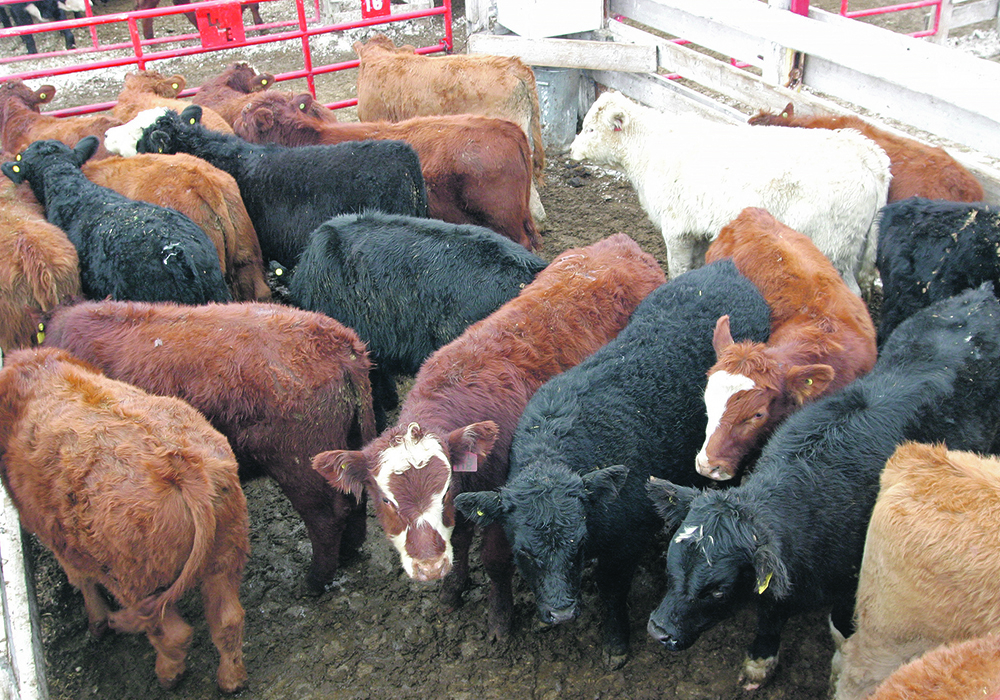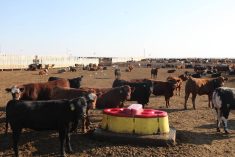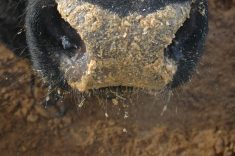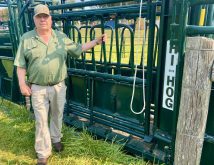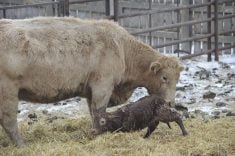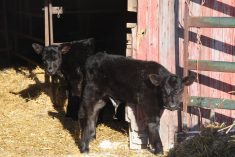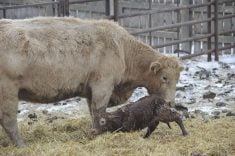A research project will look at how to improve the use of existing vaccines to immunize calves before they enter feedlots
CALGARY — Scientists want to improve the ability of calves to resist bovine respiratory disease during a “perfect storm” in their lives when they are particularly vulnerable to such infections.
Calves transferred to feedlots from cow-calf operations aren’t old enough to have a fully developed immune system, said John Ellis, professor of veterinary microbiology at the University of Saskatchewan’s Western College of Veterinary Medicine.
Passive immunity created by antibodies derived from their mothers has also largely worn off, he said.
“Of course, they’re stressed and changing diets, and exposed to agents they might not have been exposed to, so it’s kind of a perfect storm.”
Read Also
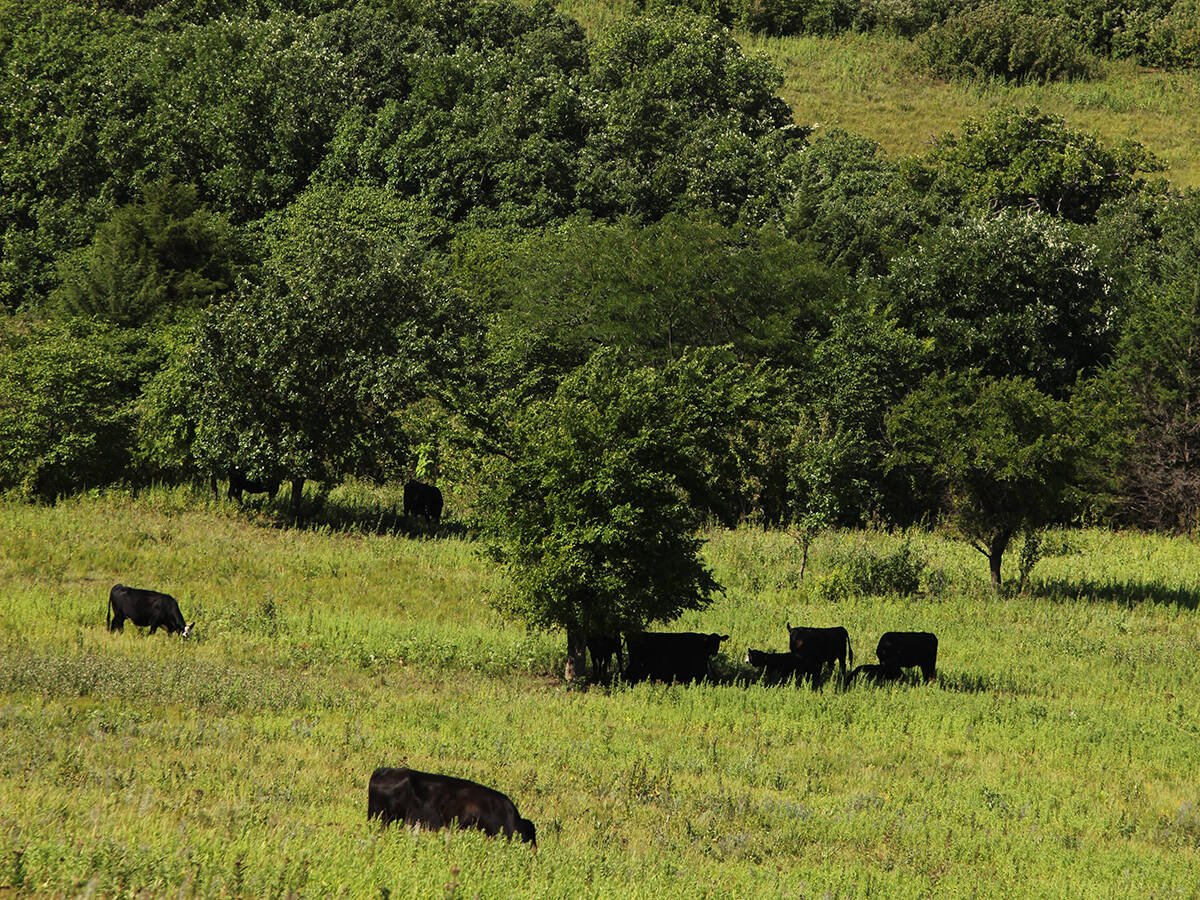
Beef cattle more prone to trace mineral deficiencies
The trace mineral status of our cows and calves is a significant challenge for western Canadian producers and veterinarians.
Funding for a research project includes $157,672 from Saskatchewan’s Agriculture Development Fund. The initiative will be led by associate professor Nathan Erickson at the WCVM in collaboration with Ellis and research scientist Nilusha Malmuthudge of Agriculture Canada in Lethbridge.
Erickson expects the three-year project will begin in 2025 and end in 2027. It will look at how to improve the use of existing vaccines to immunize calves using herds at Lacombe and Lethbridge.
He said he is not naive enough to think this approach will solve all the issues in calf protection.
“There’s a lot of other management factors that we need to look at collectively to really reduce the risk of morbidity and mortality of respiratory disease.”
Ellis said fragmentation of the beef industry between cow-calf producers and feedlots is a significant hurdle.
“We really haven’t made that much progress in controlling respiratory disease, certainly in beef cattle, for 50 years.”
Cow-calf producers are reluctant to solely foot the bill for vaccinations that will benefit feedlot operators, said Ellis. The first time many calves are immunized is when they get to feedlots after being weaned, which is “kind of like vaccinating your kids on the first day of kindergarten and expecting it to work.”
He added that there is lack of will by the beef industry to create a funding mechanism to solve what is essentially also an animal welfare issue.
“I think if the average consumer knew about the problem and how the solution could be maybe at least attempted, they could put pressure on the industry to get it done.”
Calves can be infected by respiratory viruses ranging from infectious bovine rhinotracheitis and bovine respiratory syncytial virus to bovine herpes virus-1 and bovine parainfluenza-3.
“There’s quite a few viruses that are usually the instigators, and then Mannheimia haemolytica is probably the most common bacterial secondary infection they get.”
Erickson said bovine respiratory disease in calves is a significant headache for the beef industry. Though not always fatal, there is a fairly high mortality rate averaging two to five percent, depending on the operation.
First-time antibiotic treatments can involve five to 20 percent of calves and some will likely have a poor response.
“And then those ones become our chronics and our poor doers, and they’re the ones that have a really poor production. That being said, treatment for respiratory disease in general will reduce the productivity of that animal overall, even if they’re only treated one time, but the more times they’re treated for that occurrence, so the more relapses they have, then the worse and worse their productivity becomes.”
Calves in Western Canada are typically vaccinated for the first time at about 45 to 70 days old, said Erickson, when they still have antibodies gained from their mothers. These maternal antibodies interfere with the calves’ ability to mount an immune response to injectable vaccines, “which means that if we, say, measure their antibody level post vaccination, we wouldn’t see an antibody response.”
The research project will focus on mucosal vaccines, which are typically sprayed or pushed into the nostrils of calves using syringes fitted with a nasal cannula or tube, he said. They affect the mucosal immune tissue of the upper respiratory tract, causing a response from the mucosal immune system.
“And that’s similar to what happens with pathogens, so basically, the upper respiratory tract is kind of the gatekeeper of the respiratory tract in general, and that’s where the body will try to ensure that it neutralizes pathogens and does not allow them to infect the body.”
A benefit of mucosal vaccination is that immunity is induced at the site of respiratory infection and also bypasses the interference from maternal antibodies, said Erickson. However, the immune response is typically shorter than that of injectable vaccines, which means calves lack sufficient protection after they have been weaned.
Scientists are still studying the mucosal immune system and its effect on immunity in the rest of the body.
“We’re starting to understand that it is not a separate immune system from the systemic immune system, so they are somewhat separate, but they work together.”
The research project will examine the use of mucosal vaccines shortly after birth to help prime calves’ immune systems, followed later by an injectable vaccine as a booster, said Erickson.
“And we have done a fair bit of work on this so far in a number of other projects, and we have found, at least for some of the viruses that we’re looking at, that we do get that prime-boost effect. We can start to prime immunity for calves all the way out to 24 hours of age, and then if we boost that appropriately, we do get a better protective response all the way out to that weaning age.”
New vaccines are not the goal, said Erickson.
“We’re using what we have available so we can give veterinarians and producers a good idea of what maybe is the most efficient way and effective way of utilizing the vaccines.”


